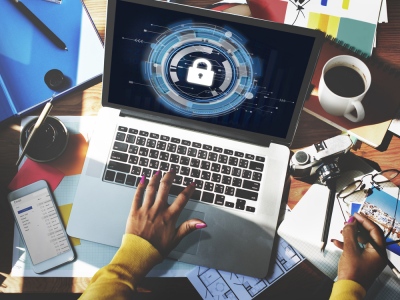In this article I will go over a few of my favorite ways of protecting digital content. Since today almost everything we do is now stored in a digital form of some kind. This includes our digital pictures from our cameras, cell phones, camcorders to our creative works which could be word documents, powerpoint presentations, Photoshop images, digital art, journal entries, and the list goes on and on. If you don’t have a reliable way to protect and backup this digital content then you may be out of luck if something bad should happen to the storage devices that these are stored on.
Before computers and 1’s and 0’s became mainstream and the way to do business, most of use had all of this content in a physical form whether it was printed paper, photos on photo paper, hard bound books, pencil and paper, etc… So if you wanted to store this you could easily put it away in a storage container, a safe deposit box, or anywhere you saw fit. Or if you wanted to rid yourself of it you simply shredded it, tore it up, or even burned it. The point here is that these were not susceptible to accidental deletion or virus attacks, unless someone put a match to it. Today with digital the game has changed on the way these files are stored and preserved. So if you don’t want to accidentally lose your files there are a few precautions you can take right now to save yourself trouble in the future.
Make Two Copies
The smartest thing you can do to protect and backup any digital file is to make two copies and keep them in two seperate places. This doesn’t not mean that you create two folders on the same hard drive and have the copy stored there, that would defeat the purpose of a backup. Ideally you will have the original on your main PC and the backup stored in one of the following places:
- Physical Media (CD’s, DVD’s, BD’s, Flash Drives, um Floppy Disk, sorry had to do it)
- External Hard Drive (Network Drive, USB Drive, a second Hard Drive)
- To the Cloud ( Online backup services )
Make a Backup to DVD
One of the most effective ways of making a backup is to burn your important files to a DVD. Or even a CD if you have a small amount of files or even to a BD (Blu-Ray) if you have the hardware and tons of files to backup. Most standard DVD burning software applications will easily backup any file you want and will allow you to create as many backups as you see fit. Even Windows 7 has a built in disc burning function where you can easily add files to a burning project and then burn when you are ready. Just keep in mind that blank CD’s can hold up to 700MB of data while blank DVD’s can hold up to 4.7GB.
Backup to External HD
One of the easier methods of backing up data is to make a clone of your hard drive to another one. This can be done using RAID 1 if you are more technically inclined which can be described as
As a simplified example, consider a RAID 1 with two identical models of a disk drive with a 5% probability that the disk would fail within three years. Provided that the failures are statistically independent, then the probability of both disks failing during the three year lifetime is 0.25%. Thus, the probability of losing all data is 0.25% over a three year period if nothing is done to the array. If the first disk fails and is never replaced, then there is a 5% chance the data will be lost. If only one of the disks fails, no data would be lost. As long as a failed disk is replaced before the second disk fails, the data is safe.
Or a better solution for those that simply want an easy way to duplicate a hard drive is to use a disk cloning software such as Acronis. This is simplified software for the rest of us to use to make perfect backups of any hard drive that we want to preserve.
Backup to the Cloud
There are now plenty of online storage services currently available that offer a few gigs of free online storage space to help you transition to using the cloud as a backup medium. Services like Carbonite and Box.net allow you to try their service for free with limited space to use in hopes that you like their service and upgrade to more space if needed. Most online storage services will offer the user a desktop widget to use to determine what files to backup, setup a scheduler to auto backup certain files and directories, and will then automatically upload and backup these files without any further user interaction. Thus making backup a no brainer operation.
No matter what type of backup you decide to go with, if you do not want to loose certain files just pick any method to save your sanity in case something should go wrong down the road. You’ve been warned. 🙂
About the Author:
Rob Boirun is a tech blogger and runs the DVD & Blu Ray Burning site www.burnworld.com which keeps users up to date on what is happening in the optical disc industry. Feel free to follow us on Twitter @burnworld










Comments